Actions and uses
Pharmacological actions
Heart
One of the main actions of beta blockers is cardiac inhibition.
First of all let’s see normal function of β1 receptors on the heart. When catechol amines act on these receptors it undergoes phosphorylation and activation of adenylyl cyclase system which then releases cAMP as secondary messenger. This cAMP then activates protein kinases responsible for increased calcium permeability. This results in depolarisation and subsequent increase in both rate and force of contraction.
Now let’s see how beta blockers act. Beta blockers bind to the β1 receptors on the heart and prevent the action of catechol amines. This results in inhibition of cAMP mediated cardiac activation.
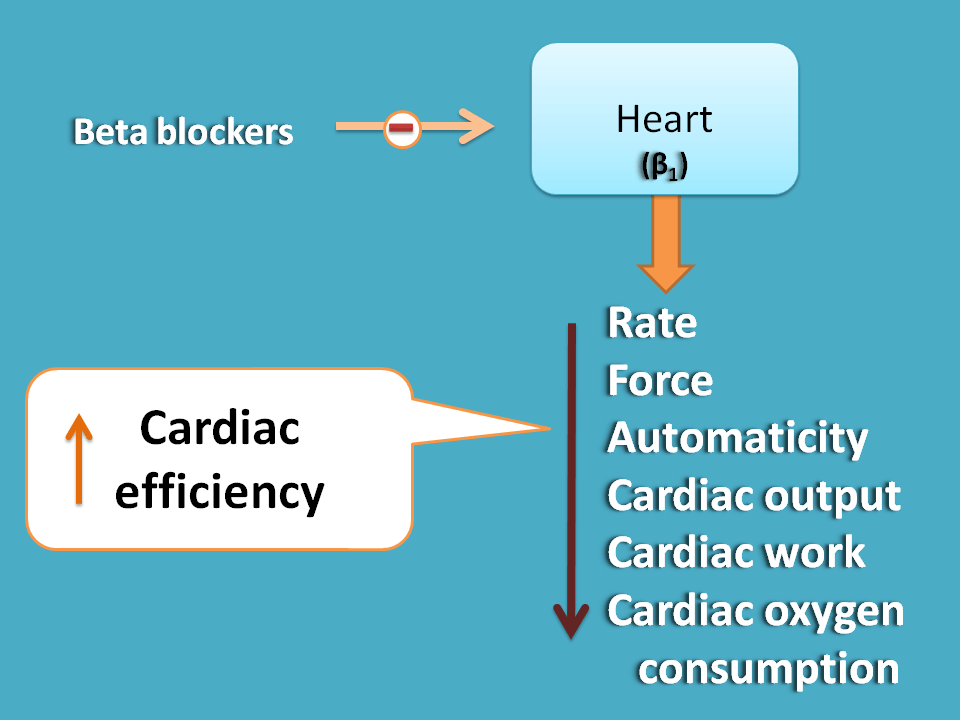
As the rate and force of contraction decreases, cardiac output and cardiac oxygen consumption decreases. This results in decreased cardiac work and increase in cardiac efficiency.
Bronchioles
This action can be attributed to β2 block. Beta blockers again inhibit cAMP mediated bronchodilatation leading to bronchoconstriction. This is more important in patients with asthma or COPD. Hence use of beta blockers may precipitate these conditions and should be carefully used.
Liver
Beta blockers decrease gluconeogenesis and glycogenolysis. This decreases glucose production from liver finally decreasing blood glucose levels. Therefore patients under treatment of beta blockers for long term may have hypoglycaemia. This can also lead to fatigue in the patients.
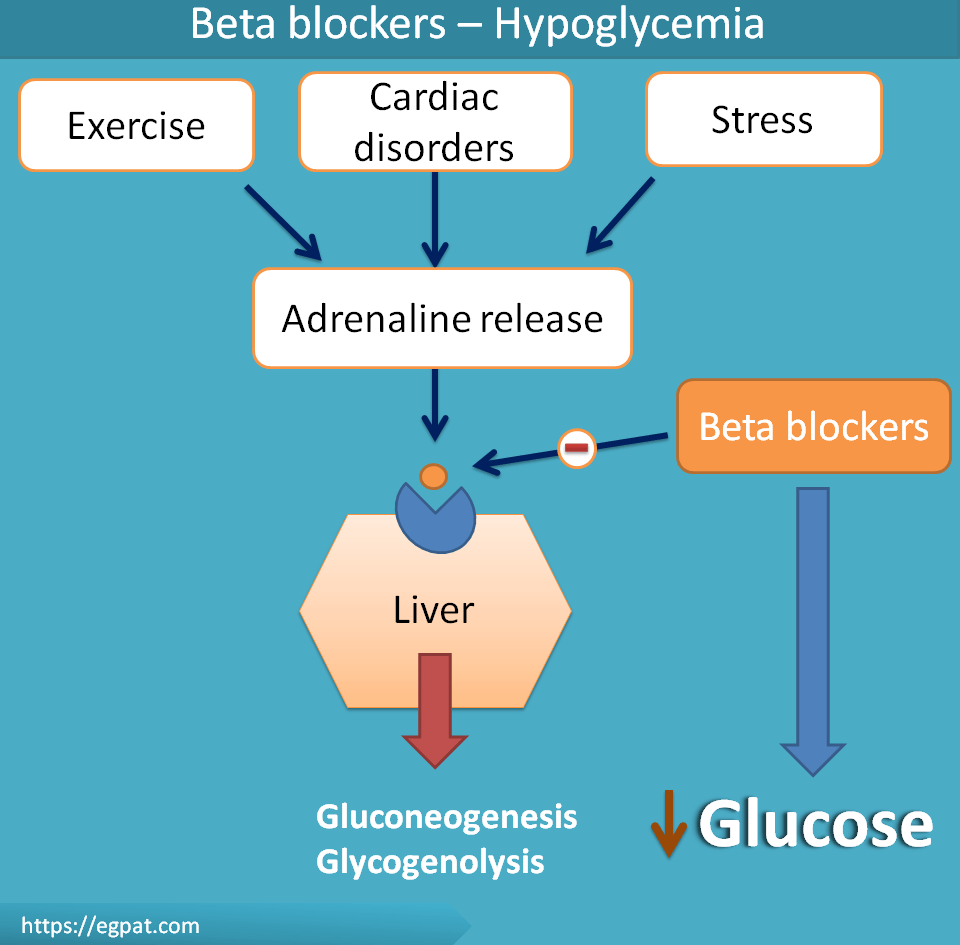
This effect is more important in diabetic patients who are under treatment of oral hypoglycaemic agents. The main side effect of these drugs is hypoglycaemia which is exaggerated by beta blockers leading to sudden fall in blood glucose levels.
Blood vessels
Beta blockers show minor effect on blood vessels as the later express more predominant α receptors rather than β2 receptors. Therefore beta blockers have no direct effect on systemic blood vessels.
β2 receptors are predominant on few of the blood vessels supplying to skeletal muscle and liver.
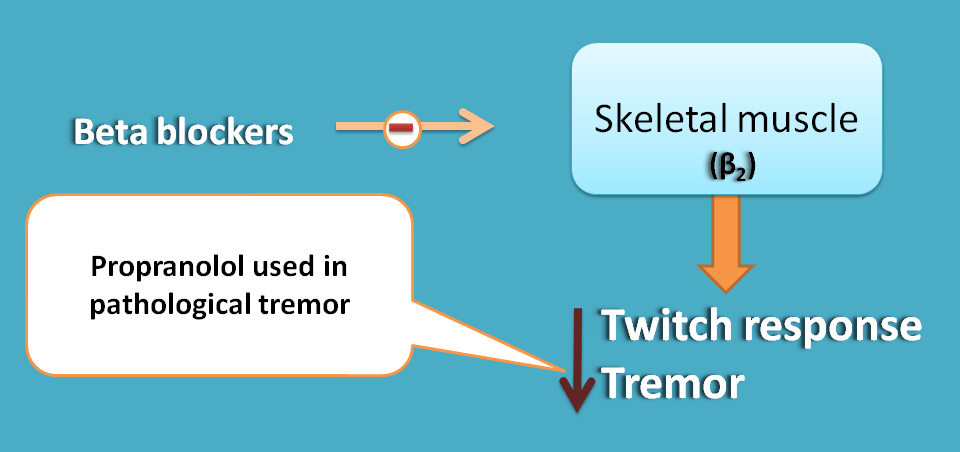
Therefore beta blockers decrease blood flow to the skeletal muscle and liver. The reduced blood flow to the skeletal muscle decreases twitch response thereby decrease tremor.
That’s why beta blocker like propranolol can be indicated for pathological tremor.
As the blood flow is reduced to skeletal muscle, fatigue can be observed.
Kidney
We have already discussed in earlier sections that organs like liver and kidney are supplied by sympathetic system only without any parasympathetic innervation.
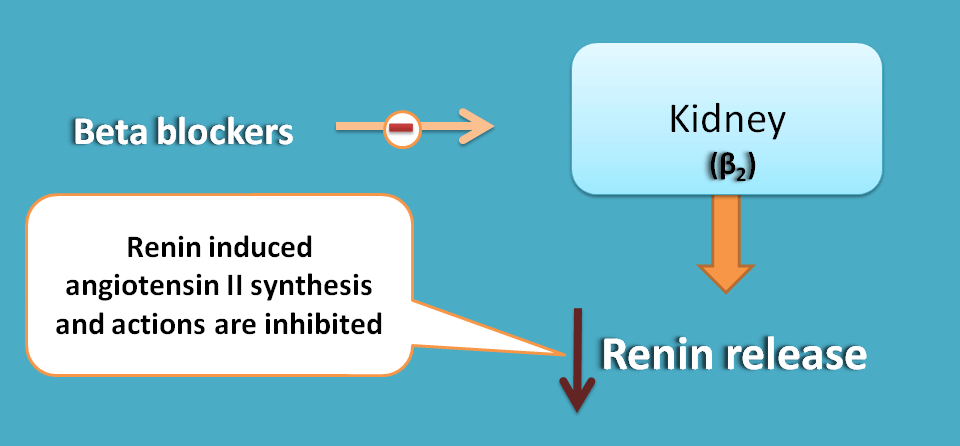
Beta blockers decrease the renin release by blocking β1 receptors therefore activation of renin-angiotensin system and synthesis of angiotensin-II are prevented.
This decreases AT II mediated vasoconstriction and raise in blood pressure.
Eye
Beta blockers like timolol can decrease intraocular pressure hence used in glaucoma and ocular hypertension.
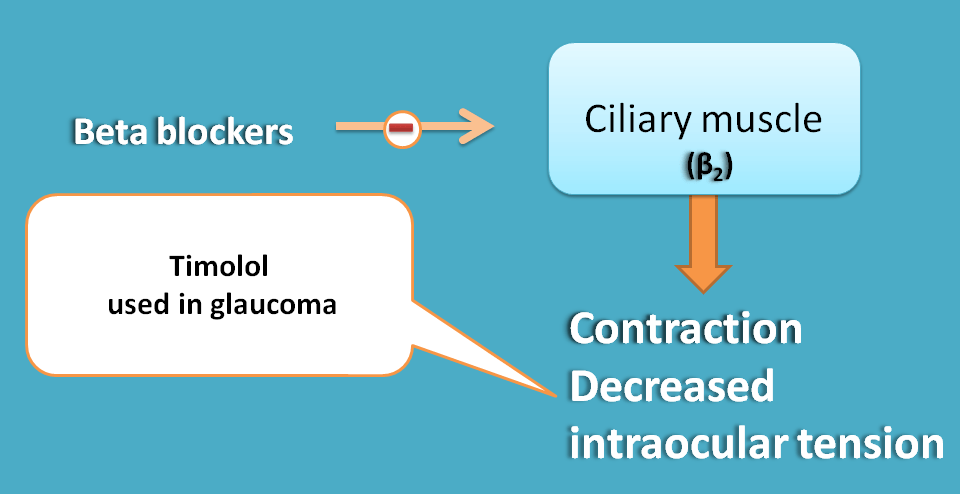
Side effects
- Bradycardia
- Bronchospasm
- Hypoglycemia
- Fatigue
- Cold sensation
- Vivid dreams
Bradycardia
Beta blockers inhibit cardiac stimulation thereby show negative inotropic effect. This causes decrease in heart rate leading to Bradycardia.
Bronchospam
As discussed above, beta blockers particularly non-selective, inhibit β2 receptors on bronchial smooth muscle and produce bronchospasm.
Fatigue
Beta blockers decrease blood glucose levels and also decrease muscle tension leading to tiredness in the patients.
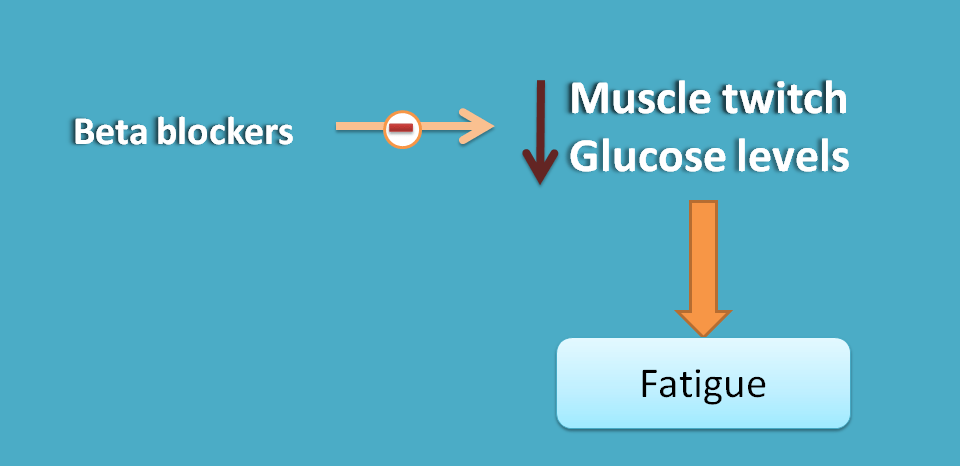
Cold sensation
As the beta blockers inhibit β2 mediated vasodilatation at cutaneous blood vessels sufficient heat is not transferred leading cold sensation in hands and feet.
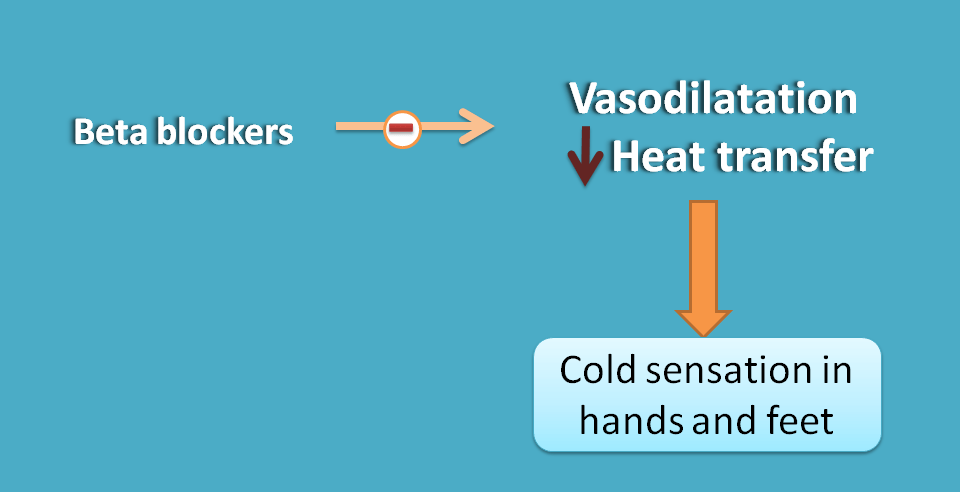
Vivid dreams
This is shown by the lipophilic beta blockers such as propranolol that can cross blood brain barrier.
Indications
Beta blockers are the widely prescribed agents for various disorders.
- Cardiac arrhythmias
- Angina
- Heart failure
- Myocardial infarction
- Glaucoma
- Ocular hypertension
- Pathological tremor
All beta blockers are not suitable in heart failure as they decrease force of contraction and hence cardiac output. Only three drugs with minimum effect on cardiac output are approved. They are
- Metoprolol
- Bisoprolol
- Carvedilol
Beta blockers are also used in other conditions where sympathetic system is excessively activated. They include
- Generalised anxiety disorders
- Migraine
- Hyperthyroidism
Points to remember
- All beta blockers end with suffix “-olol” except labetalol and carvedilol.
- Non-selective beta blockers have more risk of bronchospasm than selective beta blockers.
- Beta blockers decrease cardiac output hence all drugs are not indicated in heart failure.
- Beta blockers can be used prophylactically in various conditions like anxiety disorders, migraine, hyperthyroidism and myocardial infarction.
- Esmolol is one of the short acting beta blocker given by infusion.